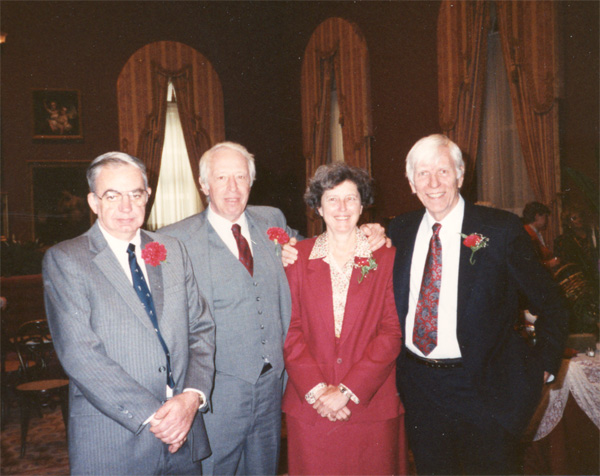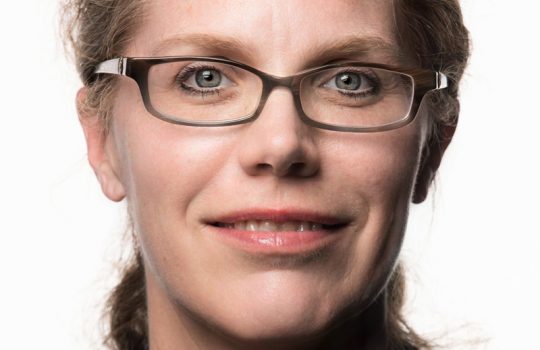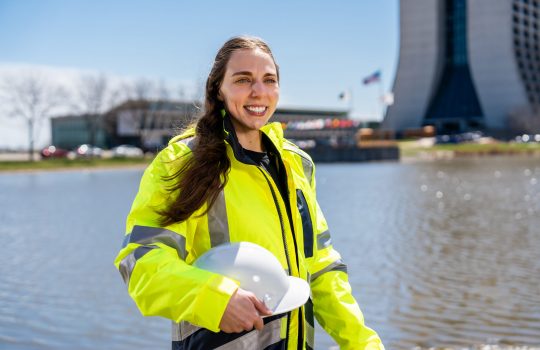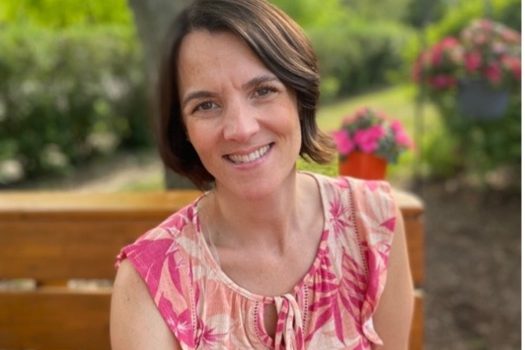Fermilab has lost one of its giants. Award-winning engineer and physicist Alvin Tollestrup, who played an instrumental role in developing the Tevatron as the world’s leading high-energy physics accelerator at Fermi National Accelerator Laboratory and founding member of the Collider Detector at Fermilab collaboration, died on Feb. 9 of cancer. He was 95.
Tollestrup led the pioneering work of designing and testing 1,000 superconducting magnets used in the Tevatron, which operated from 1983 until 2011 and for 25 years was the world’s most powerful particle collider. This was the first large-scale application of superconductivity worldwide.
The Tevatron led to the discovery of two fundamental particles — the top quark and the tau neutrino. The top quark, discovered in 1995, was the last undiscovered particle of the six-member quark family that explains the composition of protons, neutrons and other particles. Scientists worldwide had sought the top quark since the discovery of the bottom quark at Fermilab in 1977. The discovery of the tau neutrino with the Tevatron accelerator followed in 2000.
“Alvin’s impact on the laboratory and on high-energy physics was just exceptional, and the development of technology with regard to the superconducting magnets had a tremendous impact on accelerators,” said Fermilab senior scientist emeritus Herman White. “All who knew him, socially and professionally, found him to be engaging, thoughtful and someone with a long, important history of working in the research community and here at Fermilab.”
Tollestrup was born March 22, 1924, in Los Angeles. He received his bachelor’s degree in engineering from the University of Utah in 1944. After service in the U.S. Navy, he entered graduate school at the California Institute of Technology, where he earned his Ph.D. in physics in 1950. His doctoral adviser was William A. Fowler, who shared the 1983 Nobel Prize in physics. Tollestrup then took a position at Caltech to build the electron synchrotron, a type of particle accelerator. At the time it was the highest-energy synchrotron in the world, starting at 500 million electronvolts, or MeV, finally reaching 1,300 MeV.
He joined the Caltech faculty as an assistant professor of physics in 1953. While on sabbatical at CERN, the European particle physics laboratory, from 1957-58, he helped plan and execute the first experiments on the lab’s 600-MeV cyclotron particle accelerator. The work led to the first observations of the electron decay mode of the pion (a subatomic particle consisting of up and down quarks and antiquarks). He became an associate professor at Caltech in 1958 and a full professor in 1962.
Tollestrup arrived at Fermilab in July 1975 on another sabbatical, intending to stay only six months. He ended up stretching the sabbatical to two years, during which time he worked on superconducting accelerator technology.
He joined the Fermilab staff following his sabbatical and in 1978 became head of the newly created Collider Detector Facility. He later became a founding member of the CDF collaboration, serving as its co-spokesperson from its inception in 1983 until 1992. He was instrumental in organizing the CDF collaboration, which initially consisted of 13 institutions and 87 physicists from the United States, Italy and Japan. His recruiting strategy included producing an Uncle Alvin “I Want You” poster (see page 5).
“Alvin was very accepting of collaborating with my Italian group, who had superior experience on experiments at a particle collider and comprised researchers of great quality,” said University of Pisa Professor Emeritus and former CDF co-spokesperson Giorgio Bellettini. “His scientific wisdom was rewarded by the Italians. He was treated with great respect and consideration at all times. His leadership paved the way for the success of CDF and of the Italians at Fermilab.”
The respect for Tollestrup was shared among many.
“Alvin was a collaborator of mine since the mid 1970s. As a founder and leader of CDF, he made important personal contributions, gave wise advice and strongly supported the young physicists in the collaboration,” said University of Chicago scientist Mel Shochet, who was CDF co-spokesperson from 1988-94. “He was also a good friend with a great sense of humor and a dash of good-natured teasing. I will miss him.”
During the 1990s Tollestrup also became a founding member of the Neutrino Factory and Muon Collider collaboration, which today is known as the Muon Accelerator Program. MAP is devoted to developing and testing the demanding technologies and innovative concepts needed to discover and explore exciting new regions of fundamental physics.
In 2009, along with Florida State University’s David Larbalestier, Tollestrup successfully launched and led the Very High Field Superconducting Magnet Collaboration. Its purpose was to study the applications of high-temperature superconductors to accelerator superconducting magnets.
After only two years and $4 million in funding, the collaboration significantly increased the current density of a bismuth-based superconducting material that would be needed for the next-generation of accelerators and new cutting-edge technologies for applications in industry and medicine.
His colleagues remember him as an active, engaged member of the Fermilab community.
“His insightful questions in the lab’s Joint Experimental-Theoretical Physics Seminar, aka the Wine & Cheese, will always be missed, as well as his friendly, always encouraging personality,” said Fermilab scientist Stephen Parke.
Tollestrup received many honors during his career, including the National Medal of Technology — the nation’s highest honor for technological achievement — and election to the National Academy of Sciences.

The 1989 National Medal of Technology recipients, from left: Richard A. Lundy, J. Ritchie Orr, Helen T. Edwards, Alvin V. Tollestrup. Photo: Janine Tollestrup
Tollestrup received the Robert R. Wilson Prize of the American Physical Society for Achievement in the Physics of Particle Accelerators in recognition of his contributions to the development of the Tevatron’s superconducting magnets. Other honors include Caltech’s Distinguished Alumni Award and the Superconductivity Award from the Institute of Electrical and Electronics Engineers for significant and sustained contributions to applied superconductivity.
“Alvin was, in my humble opinion, one of the giants at Fermilab on whose shoulders we all stand today,” said Fermilab scientist Elliott McCrory. “He was described to me as a ‘6-sigma physicist’ – which is our way of saying he was one in a million.”
Well-known for nurturing students and young scientists, he also is the namesake of the Tollestrup Award for Postdoctoral Research, which the Universities Research Association Inc. has presented annually since 2003. The award recognizes outstanding work conducted by a postdoctoral researcher at Fermilab or in collaboration with Fermilab scientists.
“While the research community is well aware of Alvin’s scientific contributions, I think one of the greatest legacies he leaves is his devotion to nurturing young people in the field,” said Brookhaven National Laboratory scientist Mark Palmer, who worked with Tollestrup in the Muon Accelerator Program. “Numerous young researchers were beneficiaries of his patience and incisive approach to problem-solving as he mentored them.”
Tollestrup and his wife Janine were collectors of the art of the late Martyl Langsdorf, whose work combines art and science. Many of her works were acrylic paintings of the American landscape, but she also designed the iconic Doomsday Clock image in 1947 for “The Bulletin of the Atomic Scientists.” The clock’s time symbolizes how close the world is to global disaster. Works from the Tollestrup collection, along with others from the collection of former Fermilab Director Leon Lederman and his wife Ellen, were displayed at the Fermilab Art Gallery in 2012.
“His impact encompassed the full spectrum of what a scientist can do in this field: to be able to have an impact on people who are beginning their careers, people who are in the technology part of particle physics, people who are doing work in the analysis of the scientific effort that’s come out of it, as he did on the CDF experiment, as well as the impact on preparing the next generation of scientists that will come after him,” White said. “He certainly did that tremendously well.”
Interment will be private, and memorial plans are pending. In lieu of flowers, donations in Tollestrup’s name to Fermilab Friends for Science Education or the American Cancer Society are appreciated.
Read an interview with Tollestrup in the California Institute of Technology Archives.
Read Tollestrup’s obituary.




